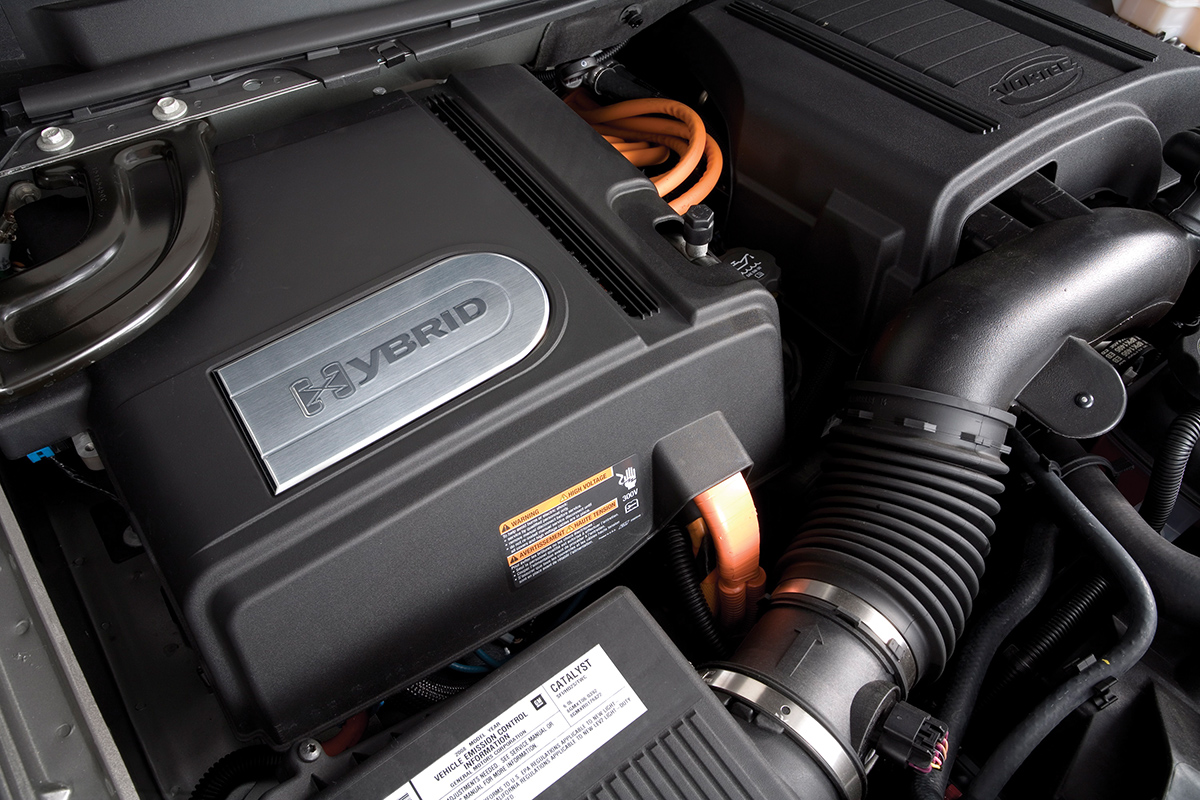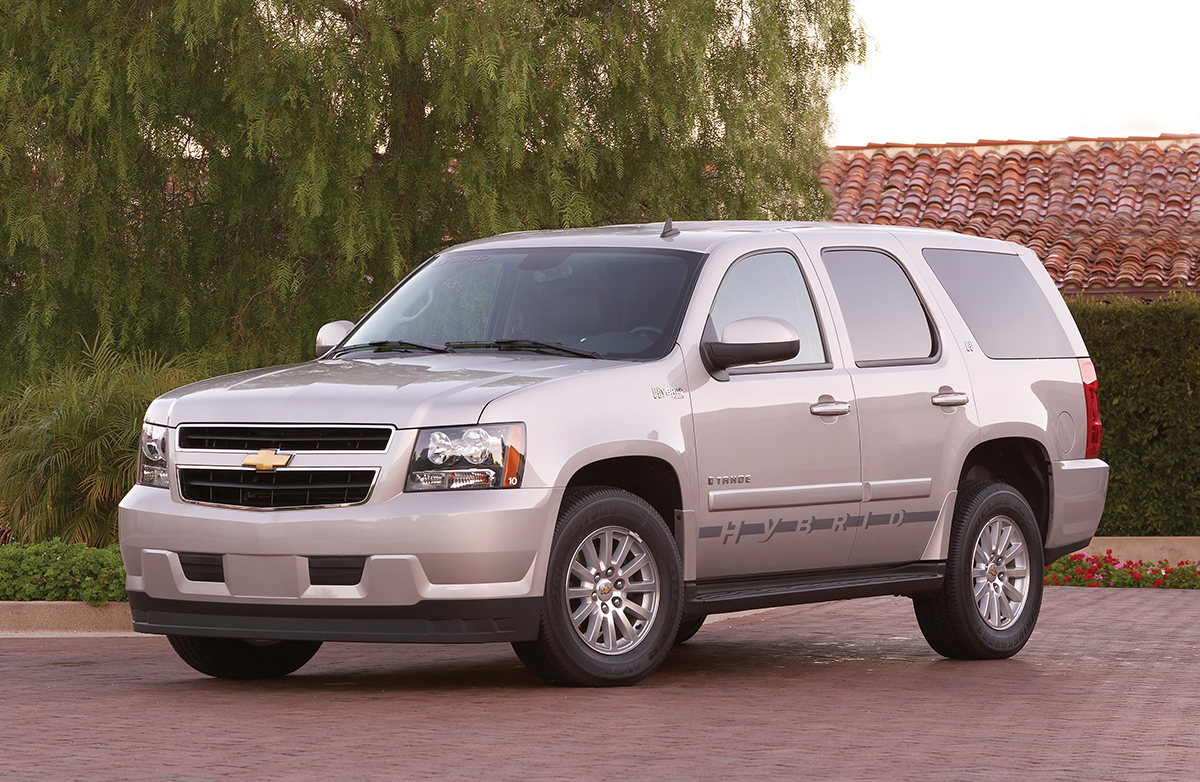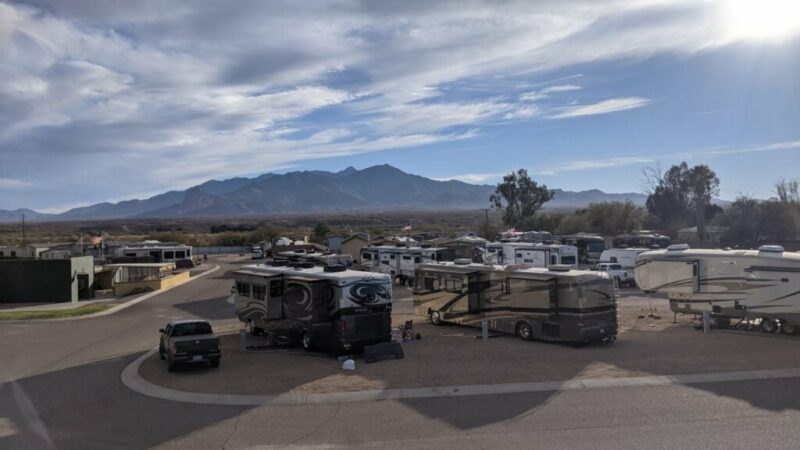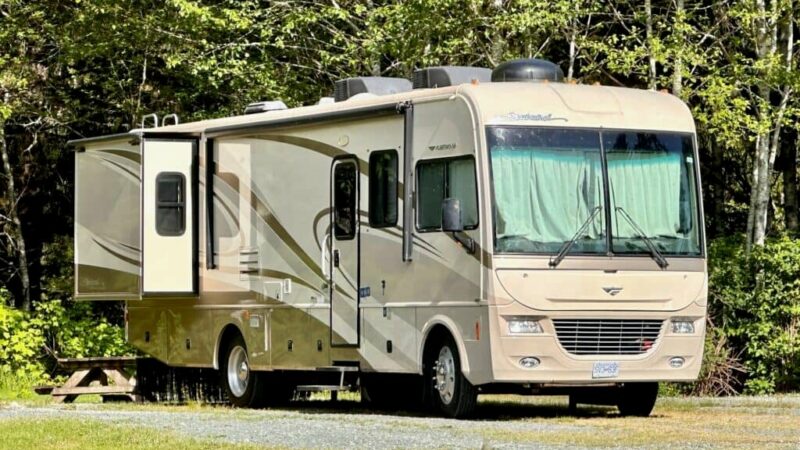Hybrid Vehicles
By Garth W. Cane
When the hybrid tow vehicles first hit the market, some years ago, our RV Lifestyle Magazine road test teams had the opportunity to check out the PR fleet vehicles for a week of intense touring. Reflecting on the current shift from ICE to EV and hybrid vehicles, this column may provide some insights that are useful in the mid 2020s.
I drove to Louisville, Kentucky for the Annual Recreational Vehicle Industry Trade Show in a Chevrolet Tahoe Hybrid vehicle, and on the way home did the return trip in a Chrysler Aspen Hybrid, a distance of 1000 km each way.
On the highway portion of the trip, I had the opportunity to enjoy the smooth and powerful driving characteristics of the vehicles, which, when combined with the fuel-efficient electric operation of the vehicles, provided a well-rounded experience of the true benefits of driving a Hybrid.
Driving around the cities of Toronto and Louisville, the electric motor capabilities of the Hybrids came into play. At speeds of less than 40 km/h, the electric motor produced the traction power with good acceleration and the gasoline motors kicked in seamlessly during hill climbing and passing. Chrysler, General Motors, and Mercedes-Benz co-operated on the design of the Two-Mode Hybrid drive system that was used in both of the vehicles that I drove – the only differences were in how each company implemented the software to control the system.
During low speed travel, motive power comes only from the alternating current synchronous electric motors powered by an inverter from the 300-volt batteries. When we needed additional speed, the gasoline engine powered us around town. But when we needed full highway speed during acceleration, climbing hills, or towing a trailer both the electric motors and the gasoline engine worked together to power the vehicle.
Whenever we slowed down or stopped, the gasoline engine stopped working and the batteries were charged by the generator action of the motors during braking. For a while, we were perplexed as the tachometer in the Tahoe dropped to zero and the engine noise disappeared. When we were at a stop light, there was silence as neither the engine nor the electric motors were operating, but the heater, radio, GPS system, headlights and all other 12-volt accessories were still operating from the batteries. As soon as your foot touched the accelerator, the vehicle moved ahead with the electric motors and then as speed built up, the gasoline motor started to produce motive power. It was a little eerie at first, when you expected to hear the gas engine rev up when pulling away from a stop light. I am told that if there is not enough power left in the battery, the gasoline engine will not shut off during stops. When first starting off on a cold day, the hybrid system is turned off, and does not operate until the engine warms up.

Both vehicles used a system that shut off half of the eight cylinders of the engine so that it ran on four cylinders when cruising or not accelerating to save fuel on the highway. The Tahoe system was called Active Fuel Management, and the Aspen was called Multiple Displacement System. The Aspen instrument panel had the usual fuel gauge, engine heat gauge, speedometer and a new gauge that showed Charging, Economy, and Power. Whenever you were coasting or braking, the needle was in the charging region. When the Multiple Displacement System kicked in, the needle went to the economy region of the gauge. During acceleration, passing manoeuvres, or towing, the needle was in the Power range. The assistance from the electric motors helps the engine to stay in four cylinder mode more often than without a hybrid power train.
In Mode One, the vehicle can operate on one of three ways – on electric power only, on gasoline power only, or a combination of both. In Mode Two, at highway speeds, four cylinders are turned off for economy when power demands are low; when passing, towing a trailer, or driving uphill the gasoline engine operates on eight cylinders and extra power comes from the electric motors.
The big savings of the hybrid vehicle is up to 40% better fuel economy when driving around the city which is almost as good as the highway mileage from a conventional vehicle. The Hybrid vehicles can reduce fuel consumption by several hundred gallons of gasoline each year. But there is a premium cost to purchase the Hybrid because of the addition of the large battery and electric motors.

For a driver who spends most of his time in stop-and-go traffic, the Hybrid would be ideal. Battery life is estimated to be about ten years. When you are towing a trailer, both the gasoline engine and the electric motors are running off the battery. Since the battery system is only charged during deceleration and braking, I wonder how well the battery will hold its charge after a full day of towing, because an RV’er on a holiday does not encounter many coasting or stopping periods during the day.
The warranty on the Tahoe included 3 years or 60,000 miles, a power train warranty of 5 years or 160,000 miles, and an 8 year or 160,000 mile warranty on the Hybrid components. The Tahoe also had a battery rundown protection system. The Aspen warranty is similar with 60 months or 100,000 km for the power train, Basic warranty 36 months or 60,000 km, corrosion perforation warranty 60 months or 160,000 km, Roadside Assistance 60 months or 100,000 km, Hybrid electrical components 96 months or 160,000 km.
At this year’s each manufacturer exhibited some form of electrically powered vehicle to satisfy the government and environmentalists with greater fuel economy. Unfortunately, many drivers may not want to purchase the more expensive vehicles. So the manufacturers may be forced to build vehicles that the public will not buy. For many of us, towing a trailer or fifth-wheel around the country, we will still get great fuel economy, better tow ratings, and more power with a conventional truck.
The Aspen was much more luxurious inside with great creature comfort and a smoother ride than the Tahoe, although this was due to the specifications of the PR fleet, and you could option either vehicle for as spartan or luxurious interior as you like, and include as many options as you feel you need or can afford.

One difference between the two vehicles was that at slow speeds with the Tahoe, when the electric motor only was working, we could hear what appeared to be a distant siren. We kept looking around to see where the police car was. There was a slight shudder when the gasoline engine started up, but this was not objectionable. The Tahoe also had the latest-generation OnStar 8.0 with Stolen Vehicle Slow Down, Turn by Turn navigation, and Destination Download to Navigation radios. Another good feature was the voice announcements of traffic conditions on the road ahead.
Specifications:
Chrysler
Aspen
Engine: 5.7L V8
Multiple Displacement System
Engine Horsepower: 345HP
Engine Torque: 380 lb-ft
Electric Motors: 87 hp
Transmission: 2-mode hybrid
Fuel Capacity: 102.2 L
GVWR: 7050 lb
Payload: 1400 lb
Max Trailer Towing: 8750 lb
Tires: P265/60R18
Battery voltage: 300 volt
Battery type: Nickel-metal hydride
Estimated Fuel Economy in imperial mpg:
City/Highway: 27/ 31
Base Price: $55,995
Price as tested: $57,985
Chevrolet Tahoe
Engine: 6.0L V8
Active Fuel Management
Engine Horsepower: 332 hp
Engine Torque: 367 lb-ft
Electric Motors: 89 hp
Transmission: 2-mode hybrid
Fuel Capacity: 98 L
GVWR: 7100 lb
Payload: 1830 lb
Max Trailer Towing: 6200 lb (2WD) 6000 lb (4WD)
Tires: P265/65R18
Battery voltage: 300 volts
Battery type: Nickel-metal hydride
Estimated Fuel Economy in imperial mpg:
City/Highway: 29/31
Base Price: $69,765
Price as tested: $71,165







